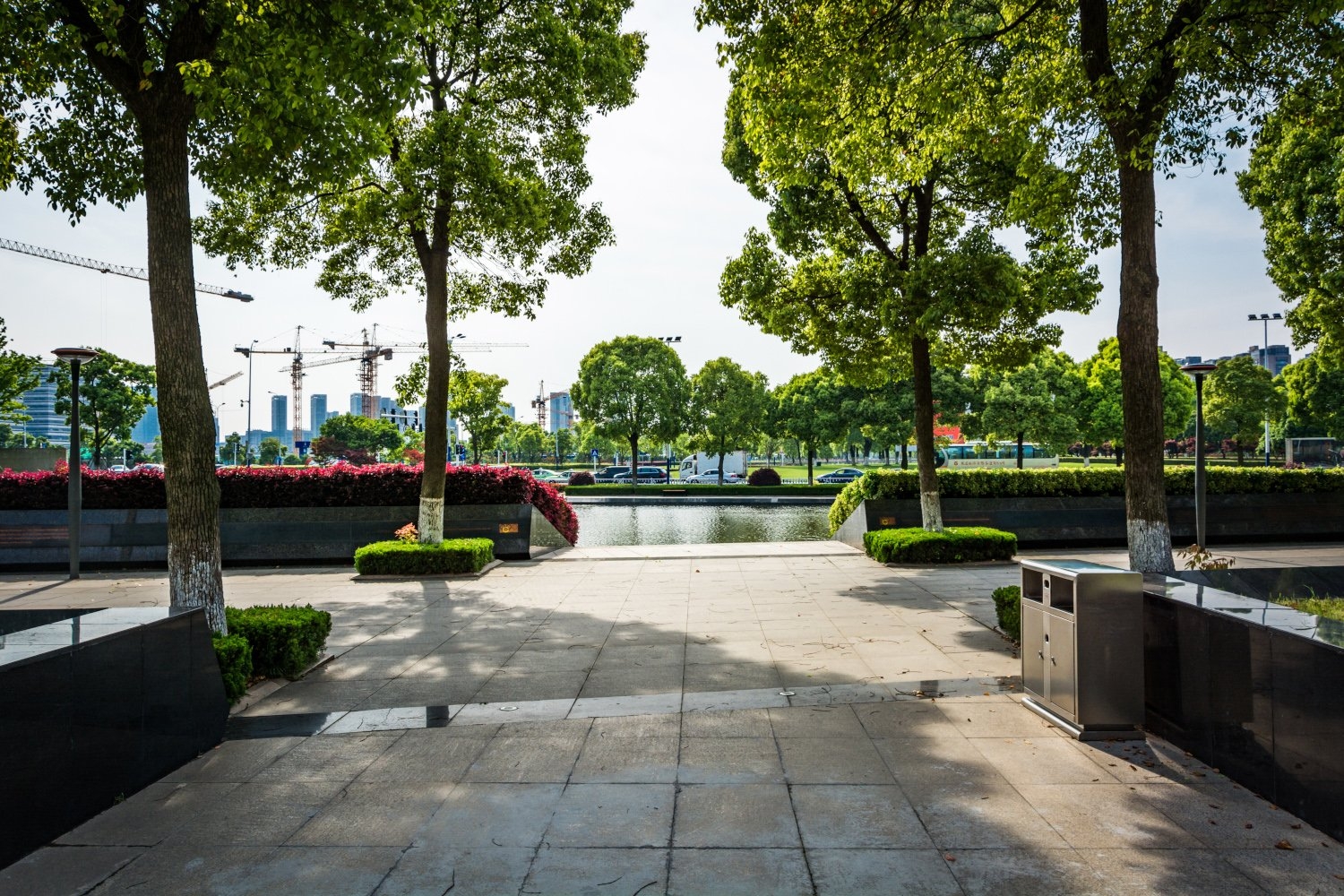In recent years, the concept of “healthy streets” has gained significant traction in urban planning circles. Championed by organisations like Sustrans and Transport for London (TfL), Healthy Streets prioritises the well-being of residents by creating environments that promote walking, cycling, and public transport while reducing reliance on cars. At the heart of this approach lies the belief that streets should be vibrant, inclusive spaces that put people first. While infrastructure and transportation policies play a crucial role, the importance of street furniture in shaping the urban landscape cannot be underestimated.
Street furniture encompasses a wide range of elements, including benches, bike racks, planters, and bus shelters. When thoughtfully designed and strategically placed, these seemingly mundane objects can transform streets into welcoming and functional spaces for all.
What Are Healthy Streets?
The Healthy Streets approach is a system of policies and strategies deployed by local authorities to transform the streets and urban landscapes around us into more human-centric spaces. The idea is that a street needs to be relaxing, inclusive, and good for our physical and mental health.
The system uses 10 scientifically based indicators to understand the health score of any given street. The more of these a place ticks off, the more appealing, pleasant, healthy and inclusive it is. Here are the indicators:
- Pedestrians from all walks of life
- Easy to cross
- Shade and shelter
- Places to stop and rest
- Not too noisy
- People choose to walk, cycle and use public transport
- People feel safe
- Things to see and do
- People feel relaxed
- Clean air
All indicators are listed as separate items, but they are all deeply intertwined and reliant on each other. A street is healthy if you can see pedestrians from all walks of life use it – older people, kids, people with disabilities or anyone from a minority or a deprived area. If everyone feels welcome and safe there, they will walk, cycle or get the bus without any stress or fear. More cycling, walking and use of public transport will make the area’s air cleaner and so on. All 10 indicators are a piece of the bigger puzzle of better living conditions for everyone.
How Can Street Furniture Help Cities Have Healthy Streets?
Street furniture plays a pivotal role in shaping the character and functionality of urban environments, contributing significantly to the creation of healthy streets. Here’s how street furniture can help cities achieve healthier streets.
Encouraging Social Interaction
Well-placed benches and seating areas allow people to gather, rest, and socialise. These spaces foster a sense of community and belonging, promoting social interaction and reducing social isolation. Placing benches and seats in an area can encourage people with limited mobility, older people or young kids to walk more as they know there will be an opportunity for them to take a break. Spaces with seating also become natural hubs for socialising and gathering or simply eating lunch outdoors.
Supporting Active Transportation
Street furniture can facilitate active modes of transportation such as walking and cycling. Bicycle racks, bike-sharing stations, designated pedestrian zones, and strategically positioned bus stops encourage residents to choose sustainable transport options, reducing reliance on cars and promoting physical activity.
Physical inactivity is a factor in 1 in 5 deaths, so this is a serious point that councils everywhere need to take on board. Additionally, walking, cycling, and using public transport are usually the cheapest ways of getting around, which makes them accessible and sustainable alternatives that need to be encouraged.
Enhancing Safety and Security
Street furniture, such as bollards and strategically placed parking posts, improves safety and security in urban areas. It makes pedestrians feel safer and more comfortable using public spaces while protecting buildings and other property.
Bollards are a great way to demarcate spaces and control traffic flow and parking. They help keep areas organised and can easily be installed to establish pedestrian zones, making cities and neighbourhoods more social, inclusive and welcoming.
Providing Rest and Comfort
Inclusive street furniture designs accommodate the diverse needs of city dwellers, including seniors, people with disabilities, and parents with young children. Benches, picnic tables in parks, and pleasant seating areas across cities make for nice rest stops that increase people’s comfort and help them relax.
Good-quality living environments can reduce stress, anxiety, and social exclusion. They also encourage people to use the streets more, stay active, and be in touch with their communities.
Local councils can ensure that everyone can navigate the city comfortably by equipping streets with seating spaces and amenities like water fountains and public toilets.
Promoting Green Spaces
Incorporating greenery into street furniture design, such as planters, green walls, and tree-lined boulevards, creates healthier, more sustainable urban environments. Green spaces improve air quality, reduce noise pollution, and provide wildlife habitats; trees provide shade and shelter from rain and strong sun. All of this helps enhance the overall quality of life for city residents.
Street furniture plays a multifaceted role in creating healthy streets by enhancing accessibility, promoting social interaction, and improving safety and security. When street furniture is strategically placed and installed with people in mind, it can contribute to the overall livability and sustainability of urban environments. By investing in well-designed and thoughtfully placed street furniture, cities can create vibrant, inclusive, and people-centred streets that prioritise the health and well-being of residents and visitors alike.
